John taught Tongan and Rui a new word: pandemonium. They love it and have gotten to use it many times in the last few days.
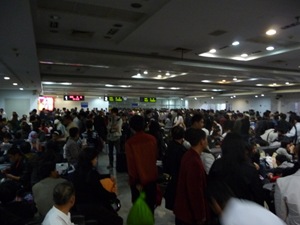 Let me tell one story to illustrate. The Shanghai train station where we departed for our train to Suzhou is gigantic. And it was filled to capacity and beyond. Like the busiest day at Disney World. But people at Disney wait in lines. Here everyone gathers in mass and pushes and wiggles their way to the front. If you politely allow someone to go before you, 12 people will slip in also. Maybe 20. We learned quickly how to do the “Shanghai shuffle” as John coined it — pedestrians and vehicles alike seem to have an intuitive ability to blend (like playing cards being shuffled). And because John and I were traveling with our friends who speak Mandarin, we had to learn to shuffle and keep together. Virtually no one speaks English. Getting lost would be disastrous.
Let me tell one story to illustrate. The Shanghai train station where we departed for our train to Suzhou is gigantic. And it was filled to capacity and beyond. Like the busiest day at Disney World. But people at Disney wait in lines. Here everyone gathers in mass and pushes and wiggles their way to the front. If you politely allow someone to go before you, 12 people will slip in also. Maybe 20. We learned quickly how to do the “Shanghai shuffle” as John coined it — pedestrians and vehicles alike seem to have an intuitive ability to blend (like playing cards being shuffled). And because John and I were traveling with our friends who speak Mandarin, we had to learn to shuffle and keep together. Virtually no one speaks English. Getting lost would be disastrous.
Getting off the train in Suzhou was memorable. You have only 3 minutes to board or disembark. The train waits for no man. As soon as you step off the train, you must keep moving. The hordes behind you close in fast. There is no space to stop and readjust backpacks or look around. The crowds determine your pace. We had to schlep our stuff quite far inside the station, and then we arrived in a large, teeming plaza. It was raining and the queue for the taxis was about 45 minutes long. Tongan and Rui left us to go buy our return tickets, and we battled crowds, beggars, and people hawking umbrellas, maps, and illegal taxi rides. I learned to say “bu” in a very stern voice accompanied by shaking of the head and a waving away of the hand. That stops most vendors but not the beggars. One old woman told me in Mandarin “not enough” after I tossed a coin into her bowl.
There are so many beggars in the cities, we could not give to all, but we chose the most desperate looking. Those for whom my heart would break.
Rui came back after 30-40 minutes and we were almost to the taxi stand. Tongan was getting the royal run-around, being sent hither and yon to buy our tickets. no signs were posted anywhere, and when he’d finally get to the ticket window, he’d be told to go elsewhere. Finally, he got the tickets but he was a couple of miles away, so we got in the taxi and went looking for him. Mobs of people were everywhere and hundreds of taxis zipped in and around them all. Stopping to pick him up was a challenge, but we did it.
Off we went to our hotel, thinking all was well. But on the way we called the hotel, and they only had room reservations for Tongan and Rui.
After many calls, it was finally straightened out but the taxi ride, during the phone calls, added to the stress. We learned that 100,000 extra people were in town for a medical convention and there were no extra rooms anywhere. But worse than that — perhaps — was the traffic. In Suzhou, besides, cars, taxis, buses, and bicycles, there are motor scooters and motorized rickshaws — and of course pedestrians. The taxi driver thought he was the only one on the road or that he should have been. He drove with one hand on the steering wheel and one on the horn. He wove back and forth between the two lanes, and often he would just drive down the center, dotted white line making his own lane. No person or vehicle ever stopped him except once when he “slowed” down for a police car.
We were very happy to arrive at our hotel and leave the PANDEMONIUM behind for a time. The hotel, however, is a story for another time. Not quite up to American standards! But an interesting experience.
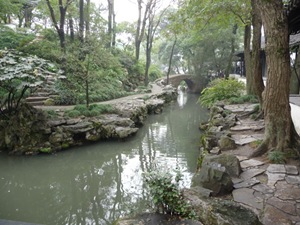
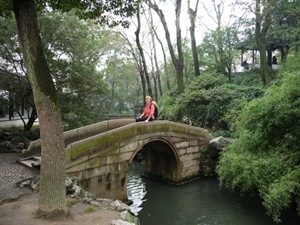
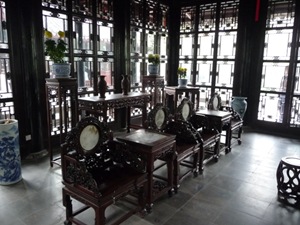
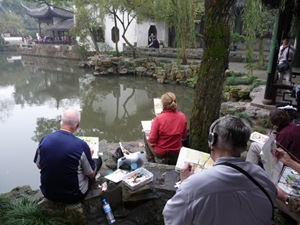
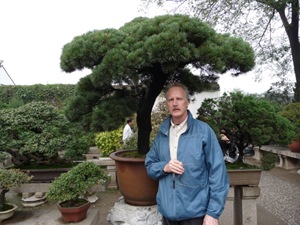
Recent Comments